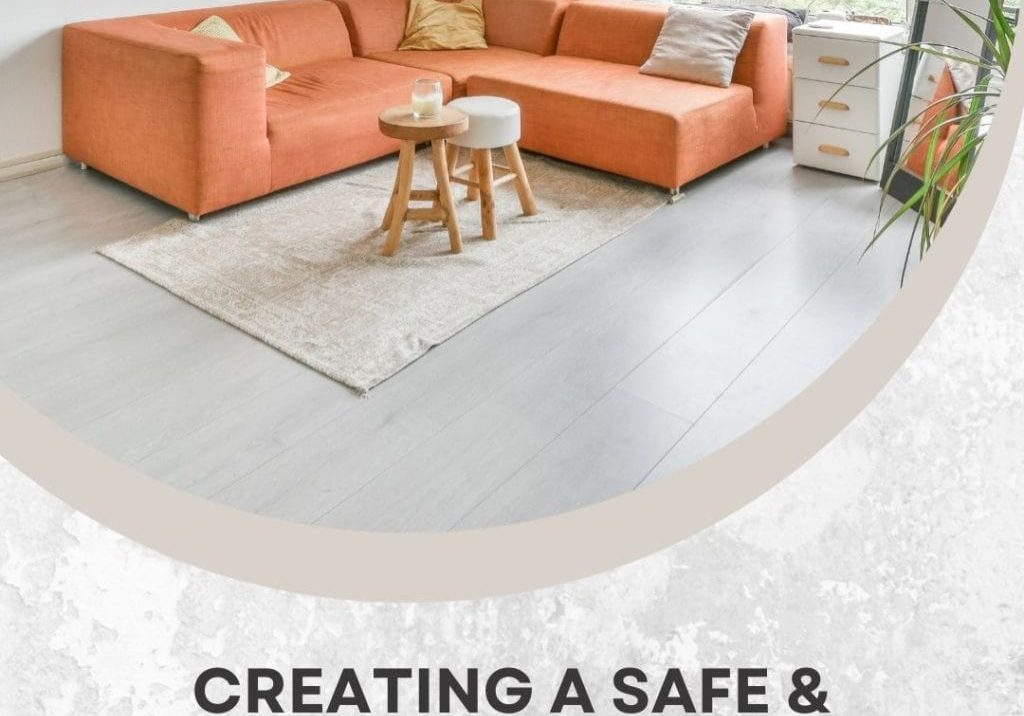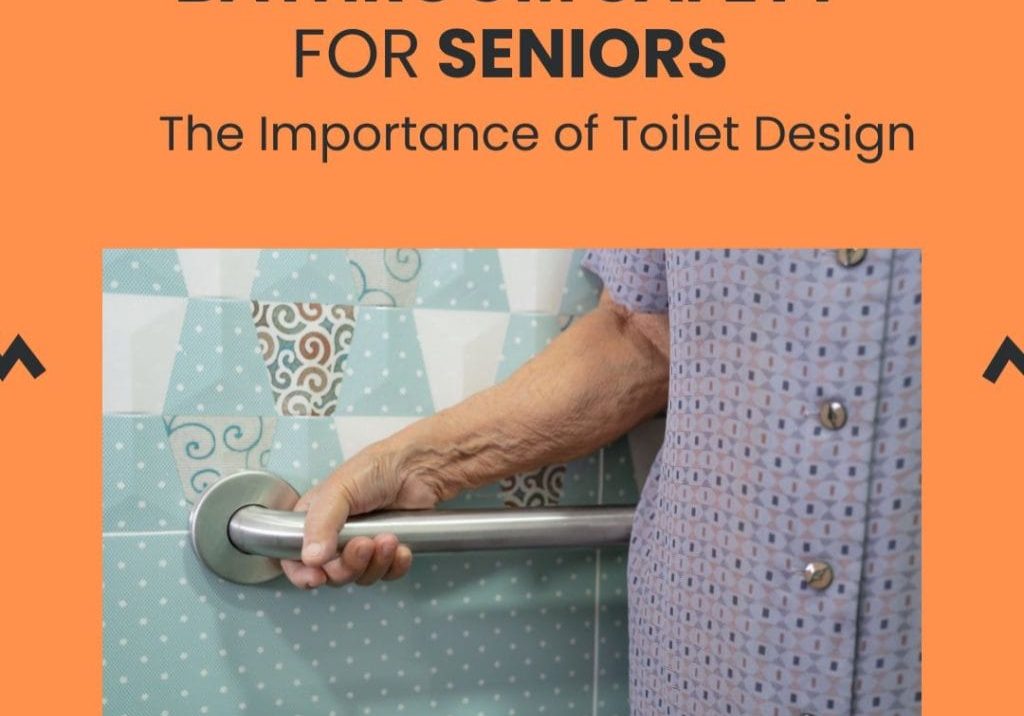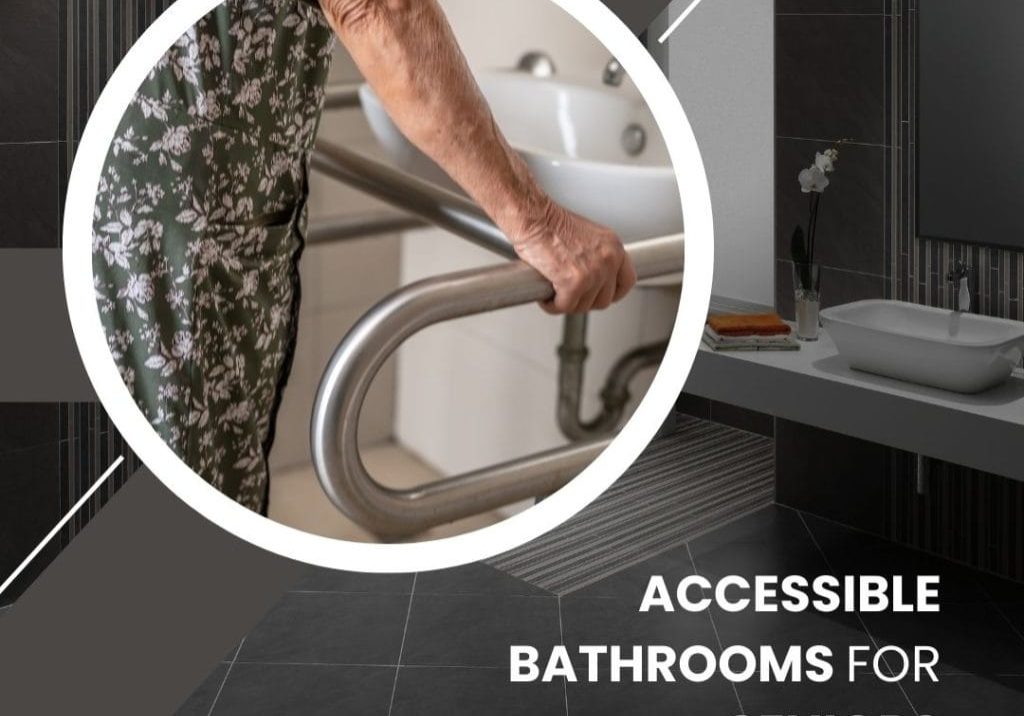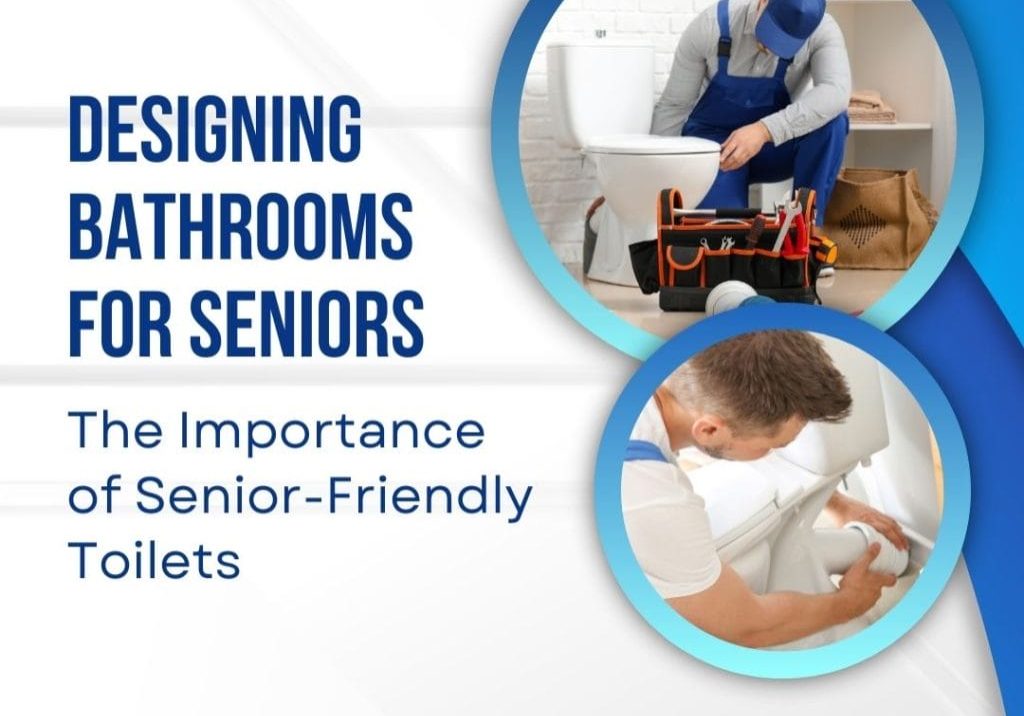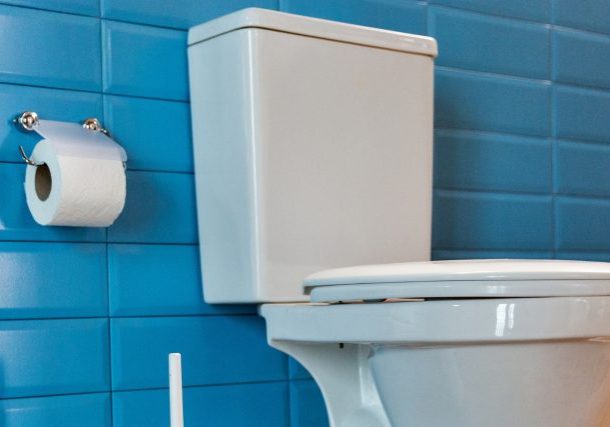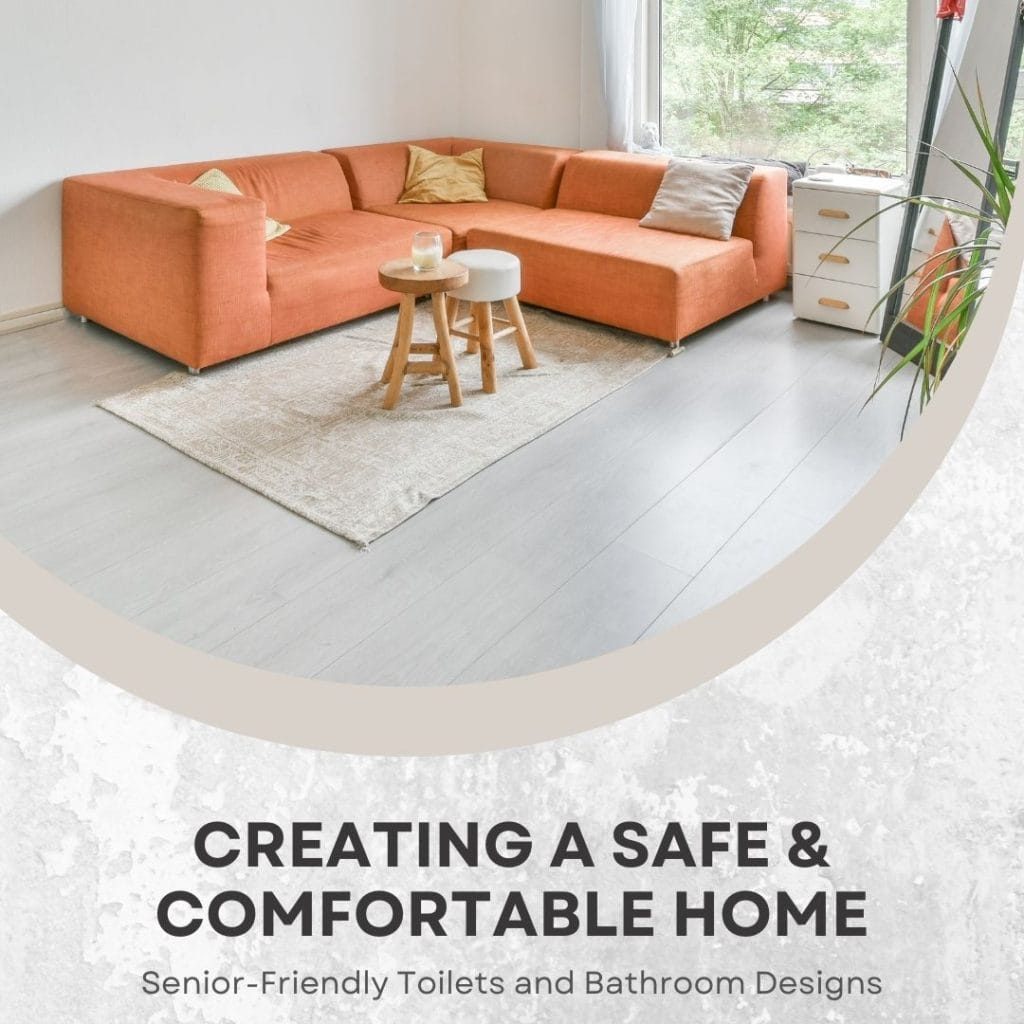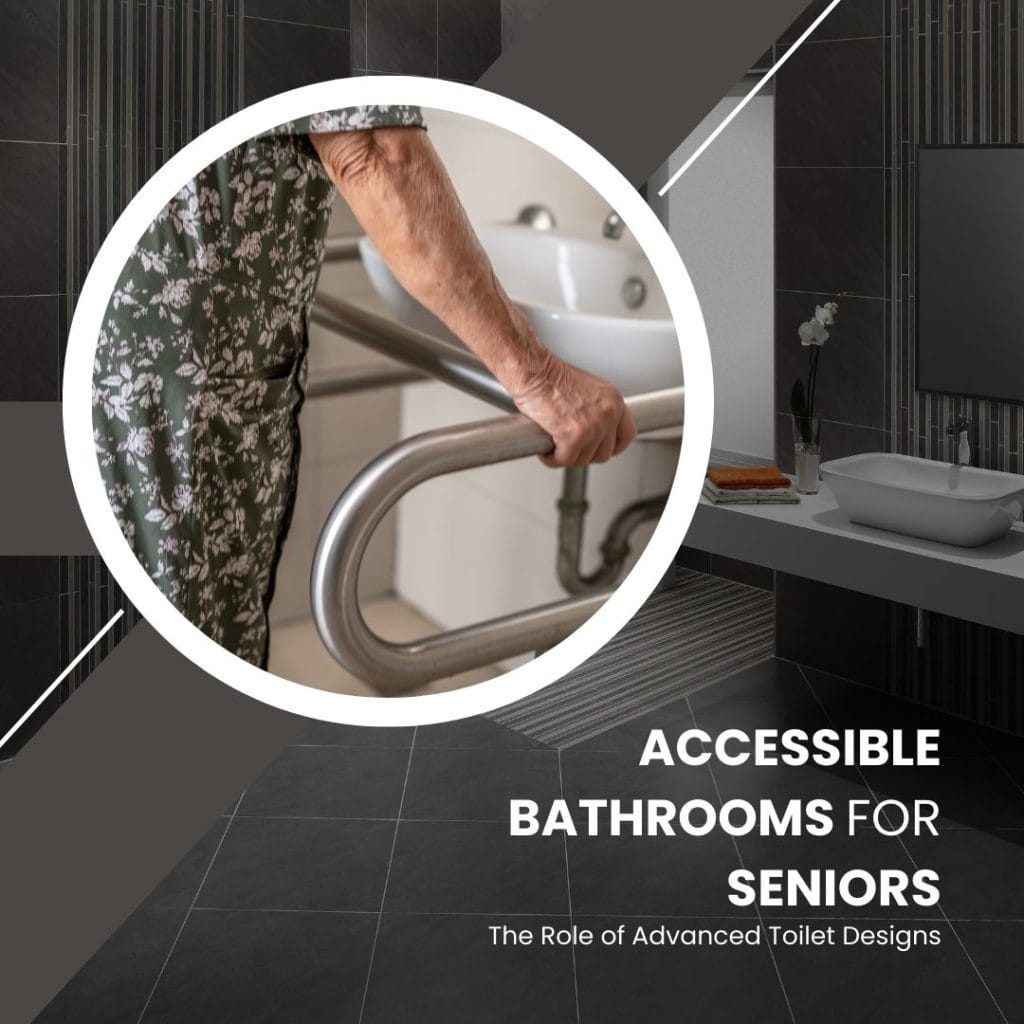As our bodies grow older, it is crucial to ensure that our bathrooms are equipped with appropriate modifications to accommodate changes in mobility. Aging-in-place bathroom design integrates comfort and accessibility into a unified concept. Whether you prefer a simple or intricate setup, aging in place empowers homeowners with safety and independence as they navigate their golden years. In this post, we will share tips on incorporating aging-in-place design principles to create innovative modifications, ensuring that your bathroom remains a welcoming and soothing space both now and in the future as your needs evolve.
Benefits of an Aging-in-Place Bathroom Design
Creating a bathroom specifically tailored for aging in place offers a multitude of benefits that address the unique needs and preferences of older adults. By focusing on enhanced safety, increased comfort, and greater autonomy, an aging-in-place bathroom design provides numerous advantages. Let’s explore the benefits of designing a bathroom with aging in place in mind.
Increased Safety
Safety features that minimize accidents and injuries are essential in a well-designed aging-in-place bathroom. For example, using non-slip flooring materials like textured tile helps prevent slips and falls on wet surfaces. Moreover, strategically positioned grab bars provide support when entering or exiting the shower area, getting in or out of a bathtub, or using the toilet.
Improved Accessibility & Comfort
Bathrooms designed for aging homeowners should also focus on enhancing comfort levels by including user-friendly fixtures like walk-in tubs, low-curb or curbless showers, widened doorways, handheld showerheads, larger maneuvering areas, improved lighting, occupancy sensors, and wall-mounted sinks.
Greater Independence
Aging-in-place bathroom designs also foster independence by enabling individuals to uphold their daily routines without depending on help from others. By including universal design elements, these bathrooms can cater to users with different levels of mobility and dexterity, enabling them to reside comfortably in their own homes for an extended duration.
Aging in Place Bathroom Remodeling Ideas
Creating a functional and stylish bathroom for aging in place can be achieved with the right design elements. Here are some recommendations:
Curbless Showers
Curbless showers offer both style and convenience to your bathroom. They not only enhance the aesthetics but also prove to be highly practical, especially for individuals with mobility issues. This makes them an ideal option for those looking to age in place. By eliminating the need for a curb, the risk of tripping over a ledge is minimized.
Walk-in Bathtubs
If you’re someone who prefers baths over showers, you might want to consider the installation of a walk-in tub. With its unique design, it provides the utmost comfort and safety, especially for individuals who have difficulty getting in and out of traditional tubs. Walk-in bathtubs come with a water-tight door that allows you to step inside without the need to climb over the tub’s edge. In addition to making bathing easier, walk-in bathtubs offer various therapeutic benefits. They often include specialized features like built-in seats, hydrotherapy jets, and air jets, which can help alleviate muscle and joint soreness. Another useful option for a walk-in tub is a handheld spray, allowing you to “shower” while seated in the tub.
Adjustable Shower Heads & Handheld Sprays
To enhance the convenience of your aging-in-place bathroom design, consider incorporating shower heads and handheld sprays with adjustable heights. These fixtures provide flexibility in water pressure, spray patterns, and height, allowing you to effortlessly switch between a relaxing rain shower, a targeted massage, or a gentle mist. Additionally, their stylish and modern designs can elevate the overall look and ambiance of your bathroom. With these features, individuals of varying heights or abilities can comfortably use the shower with ease.
Non-slip Flooring Options
Choosing the right bathroom flooring is crucial due to the high risk of falls in this room. Fortunately, there are plenty of practical and stylish tile options available for non-slip bathroom flooring. Textured tiles, in particular, offer extra grip and come in various colors and patterns. Always make sure to select tiles with a slip-resistant rating suitable for flooring. With a wide range of non-slip tile choices, you can have peace of mind knowing that your bathroom is safe. Additionally, opt for low-profile bath mats with slip-resistant backing to avoid creating a tripping hazard.
Grab Bars & Handrails
Adding grab bars and handrails in strategic areas of the bathroom can offer extra support for users as they move around. It is recommended to place them near toilets, showers, bathtubs, and sinks to help prevent accidents and falls. Note: The majority of shower-related falls occur during the transition in and out of the shower. Installing a vertical grab bar in this transition area is highly effective in reducing falls.
Comfort Height Toilets
Comfort height toilets also referred to as chair-height toilets, are designed to be slightly taller than standard models. This elevated height makes it more convenient for individuals with mobility challenges to sit down and stand up without straining their knees or back. Most of these toilets are manufactured to meet ADA height requirements, although they are commonly labeled as “Comfort” or “Chair” height.
Tip: It is recommended to test these taller toilets before making a purchase, as some individuals may find them uncomfortable for their body type, despite the benefits they offer for the knees and back.
Adequate Lighting & Contrasting Colors
Good lighting in the bathroom can greatly improve visibility, especially for those with vision impairments. Using contrasting colors on walls, floors, countertops, and fixtures can also help with navigation and safety. Installing night lights that are always on in the dark is a great idea, whether it’s the simple plug-in style or permanent lights that illuminate the floor without being too bright. Additionally, don’t forget about having night lighting from the bed to the bathroom door. Dimmers are also popular and functional for aging in place.
Ergonomic Fixtures for Better Functionality
When remodeling your bathroom with aging in mind, there are other factors to consider. Opt for lever handles instead of traditional knobs as they are easier to operate, requiring less grip strength. This is especially beneficial for individuals with arthritis or hand-related issues. Additionally, installing pull-out shelves under sinks allows for convenient access to toiletries without the need for bending or reaching, reducing the risk of injury.
Tips for Implementing an Aging-in-Place Bathroom Design
To ensure your bathroom is suitable for aging in place, it’s important to follow some essential tips when planning and designing.
Selecting the Right Materials and Fixtures
Selecting durable and low-maintenance materials is essential when designing a bathroom that will stand the test of time. Along with choosing slip-resistant flooring, consider surfaces such as quartz or solid surface countertops that are easy to clean and resistant to staining. Additionally, here are some other ideas to consider:
- Faucets: Select lever-style faucets that are easier to operate than traditional knobs. Look for models with anti-scald features to prevent burns from hot water.
- Toilets: Choose comfort-height toilets (17-19 inches) that make sitting down and standing up more manageable compared to standard-height toilets (14-15 inches).
- Sinks: Wall-mounted sinks provide ample knee clearance underneath, offering enough counter space around the basin area.
- Cabinetry: Opt for pull-out shelves or drawers instead of lower cabinets which can be difficult to access when mobility becomes limited. Select a cabinet height that suits your tolerance for bending at the waist.
Staying Within Budget
Creating an accessible bathroom doesn’t have to break the bank. Here are some tips for staying within budget:
- Prioritize essential features:
- Focus on incorporating critical accessibility elements first, such as renovating the shower area and adding non-slip flooring and comfort-height toilets.
- Consider adding luxury items like heated floors or towel warmers after addressing the essential features.
- Shop around for materials:
- Compare prices from different suppliers.
- Seek advice from your remodeling company on more affordable alternatives without compromising quality or safety.
- Avoid moving plumbing fixtures if possible:
- Relocating plumbing can significantly increase costs.
- Try to work with existing layouts whenever feasible.
- Hire professionals specializing in aging-in-place design:
- Work with experienced design and remodeling professionals, preferably certified in aging-in-place design.
- Ensure your project is designed to meet your needs and completed efficiently to avoid costly mistakes during construction.
To guarantee a successful implementation of an aging-in-place bathroom design that offers safety, comfort, and independence for the long term, incorporate these tips into your planning process. Aging-in-place design is an effective method to maintain a comfortable and safe home environment as you age, as well as for the older adults you care about. Keep in mind that individual needs may vary, so it’s advisable to seek guidance from a professional design-build remodeling contractor like Northwood Construction. They can assist in creating a personalized aging-in-place bathroom design that suits your home and lifestyle.
Conclusion
As individuals age, it’s essential to consider making necessary changes to the home, especially in areas like the bathroom where safety and accessibility are crucial. By implementing an aging-in-place bathroom design, you can ensure that you or your loved ones can maintain their independence and continue living comfortably at home. Remember to prioritize essential elements and stay within budget by shopping around for materials and working with experienced professionals. With proper planning and design, an aging-in-place bathroom can provide a functional and safe space for years to come. So start considering implementing these tips today to create a bathroom that will meet the needs of all ages!

